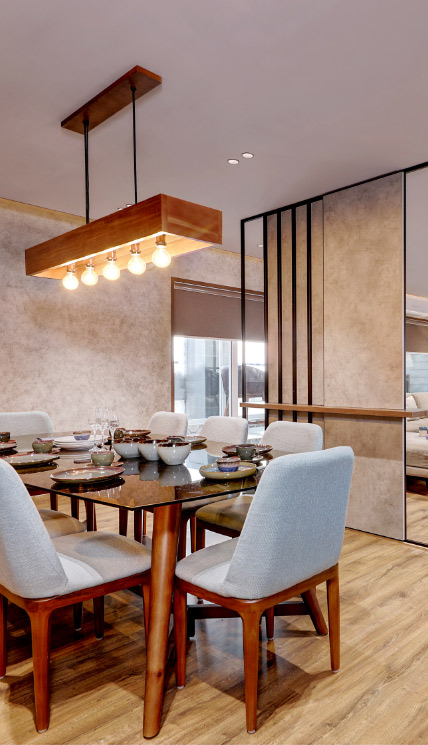Work with professionals in luxury interior design for a stylish home.
Work with professionals in luxury interior design for a stylish home.
Blog Article
Transform Your Home With Necessary Principles of Interior Decoration and Aesthetics
By understanding the impact of color concept and the significance of texture and patterns, one can create spaces that are not only aesthetically attractive however also deeply individual. Achieving this stability includes even more than simple decor; it includes a calculated arrangement and a keen understanding of how each aspect communicates within a room.
Understanding Shade Concept
Understanding the principles of color concept enables developers to develop spaces that reverberate psychologically with passengers while meeting useful needs. Each classification plays an essential role in establishing consistency within a space.
The emotional effect of colors is extensive; cozy hues such as reds and oranges stimulate energy and warmth, while awesome tones like blues and greens advertise calmness and tranquility. Additionally, making use of complementary shades enhances aesthetic rate of interest, creating striking contrasts that can raise a room's charm.
Neutral shades, on the other hand, act as a versatile backdrop, enabling various other style aspects to beam. It is crucial to consider variables such as lighting and the room's function when selecting a color palette, as these can alter the understanding of shades throughout the day.
Ultimately, a well-considered color design can transform a room, promoting a sense of comfort and style that straightens with the residents' choices. Mastery of color theory is, consequently, an essential ability for any type of indoor developer aiming to develop unified and welcoming environments.
Achieving Balance in Style
Exactly how can designers attain a feeling of balance in their spaces? Accomplishing equilibrium in style is essential to producing unified interiors. Designers can make use of three key kinds of equilibrium: balanced, unbalanced, and radial. Balanced equilibrium involves organizing aspects uniformly around a main factor, cultivating a feeling of order and serenity. This kind frequently includes sets of furnishings or art work, enhancing visual security.
Asymmetrical balance, on the other hand, counts on varying aspects that still achieve a natural appearance. This strategy enables more vibrant and casual setups, offering rate of interest while keeping balance. By meticulously choosing differing sizes, shades, and textures, developers can create a visually engaging area that really feels balanced yet energetic.
Radial equilibrium emphasizes a central centerpiece with aspects radiating outward. This style is commonly seen in circular formats, where furniture and decoration create a cohesive surround that draws the eye inward.
Ultimately, attaining balance requires thoughtful factor to consider of scale, percentage, and the connections between elements. luxury interior design. By skillfully using these balance principles, developers can change spaces into settings that really feel both visually pleasing and functionally harmonious, enhancing the general experience for occupants
Importance of Spatial Awareness

A keen feeling Continue of spatial recognition allows designers to determine prime focus within a room, directing the customer's interest to essential attributes while preserving a general feeling of unity. It additionally assists in the tactical placement of lighting, which can drastically affect the perception of space and state of mind. Understanding spatial relationships enables the designer to cater to the details demands of inhabitants, ensuring try these out that each location serves its desired objective without compromising appearances.
Inevitably, spatial understanding is important for optimizing the capacity of any type of indoor area. By thoroughly taking into consideration the interaction between dimensions, layout, and function, developers can create settings that not just fulfill sensible needs but also stimulate a feeling of comfort and elegance, improving the overall living experience.
Including Texture and Patterns
Embracing a varied variety of appearances and patterns can significantly boost the visual and responsive charm of an indoor area. The calculated use numerous materials-- such as wood, metal, fabric, and rock-- produces depth and passion, making an area feel much more welcoming and dynamic. Combining smooth surface areas with rough structures can establish an equilibrium that attracts the eye and involves the detects.
When including patterns, take into consideration both scale and repetition. Huge patterns can work as focal points, while smaller sized, subtle layouts can match various other aspects without frustrating the room. Layering patterns, such as pairing floral pillows with striped throws, adds intricacy and a sense of harmony if implemented attentively.
It is likewise critical to keep a cohesive shade combination, guaranteeing that appearances and patterns function with each other as opposed to contend for interest. By choosing a few key textures and patterns, you can develop a linked visual that shows your personal style while boosting the total atmosphere of the area. Inevitably, the cautious consolidation of these elements can change an ordinary area into an innovative atmosphere rich with personality and heat.
Customizing Your Space
Developing an area that reflects your individuality is crucial to achieving a truly welcoming atmosphere. Customization in interior decoration permits you to infuse your unique design and interests right into your home, transforming it from a plain sanctuary into a shelter that talks to that you are. Begin by selecting a shade combination that reverberates with your emotions-- vibrant shades can invigorate, while soft tones use tranquility.
Include artwork and style that reflect your interests, whether it be travel, nature, or abstract principles. Displaying individual collections, such as books, photos, or keepsakes, can evoke valued memories and create prime focus within a room. Furthermore, consider personalizing useful pieces, like upholstered furnishings, to straighten with your aesthetic preferences.

Verdict
In conclusion, the improvement recommended you read of a home via the important concepts of indoor layout and looks demands a comprehensive understanding of color concept, equilibrium, spatial recognition, texture, and personalization. Each aspect contributes substantially to developing an unified and functional living environment - miami interior design. By attentively integrating these principles, individuals can enhance the visual appeal and emotional resonance of their spaces, ultimately fostering a home that reflects distinct identities while offering comfort and functionality
Report this page